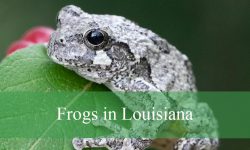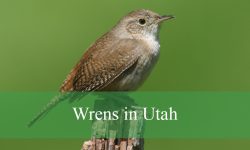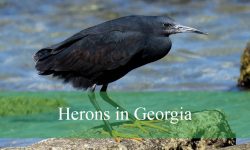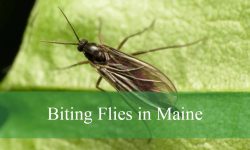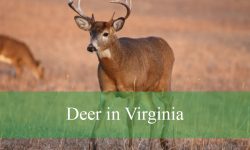Wild turkeys in Florida are emblematic game birds, exemplifying a unique combination of visual splendor, survival skills, and environmental contribution. Observing these birds in their natural habitats offers a fascinating glimpse into their complex behaviors, seasonal movements, and survival strategies. Florida is home to multiple turkey species, each exhibiting distinct traits, which makes birdwatching both exciting and educational for enthusiasts.
In this article, we explore the different types of wild turkeys found in Florida, their lifestyle, behavior, habitats, and the best locations to spot them.
Types of Wild Turkeys in Florida
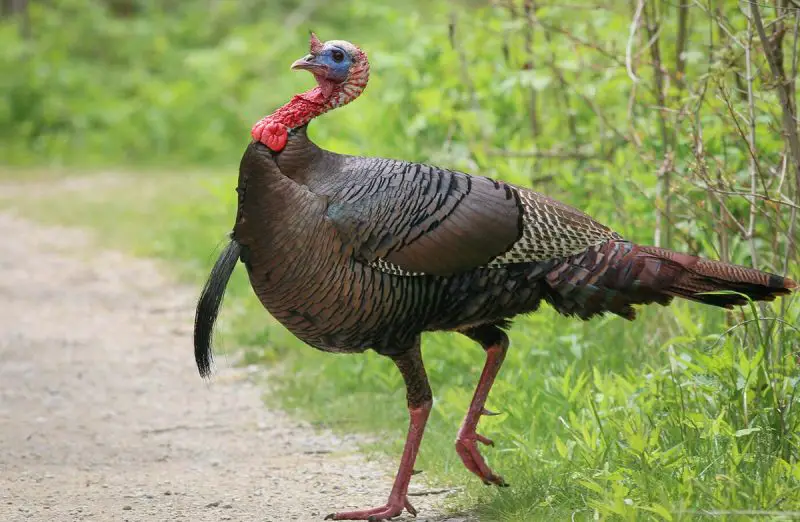
Florida is predominantly home to the Eastern Wild Turkey (Meleagris gallopavo silvestris), a subspecies of the larger North American wild turkey family. Occasionally, one might also encounter other subspecies introduced through management programs, but the Eastern wild turkey is the most widespread and ecologically significant.
Eastern Wild Turkey
The Eastern Wild Turkey is characterized by its large size, striking plumage, and impressive wingspan. Males, known as toms or gobblers, typically weigh between 11 to 24 pounds, while females, called hens, are smaller, usually around 5 to 12 pounds. Their plumage exhibits a metallic sheen with colors ranging from bronze and copper to green and gold, which allows them to blend seamlessly into forested environments. A distinctive feature of the male is the bright red wattle that hangs from its throat, a blue-tinted head, and tail feathers that fan out during displays.
Identifying an Eastern Wild Turkey is relatively straightforward due to its size, long legs, and unmistakable fan-shaped tail. Juveniles have duller feathers, providing camouflage from predators. The male’s gobble, often heard echoing through forests in early spring, is a signature sound of Florida’s woodlands.
Eastern Wild Turkeys are highly adaptable. They thrive in a variety of habitats, including hardwood forests, pine flatwoods, swamps, and even suburban areas that have sufficient cover and food. Their diet is omnivorous and varied, including seeds, nuts, berries, insects, and small amphibians. During spring and summer, they consume insects more frequently to provide protein for growing chicks.
Breeding season, known as the “rut,” occurs in late March to early May. During this period, males perform elaborate courtship displays, including strutting, tail-fanning, and wing dragging. Females lay clutches of 10 to 12 eggs in nests hidden on the ground, usually beneath dense vegetation. Incubation lasts about 28 days, after which the young, called poults, are immediately capable of following their mother and foraging for food.
A fun fact about Eastern Wild Turkeys is their remarkable vision. They have excellent eyesight, capable of detecting movement up to 100 yards away, which aids in predator avoidance. Despite this, they are agile and can fly short distances at speeds up to 55 mph when startled.
Rio Grande Turkey
Although rare in Florida, the Rio Grande Turkey (Meleagris gallopavo intermedia) has occasionally been introduced for conservation or hunting programs. This subspecies is native to the central plains of the United States and is identifiable by its lighter plumage and longer legs. Males are known for their unique tail feather patterns and more slender build compared to the Eastern Wild Turkey.
Rio Grande Turkeys prefer open woodlands and prairies but can adapt to Florida’s pine and scrub habitats. They exhibit similar feeding habits, foraging for seeds, nuts, fruits, and small animals. Breeding behaviors mirror those of Eastern Turkeys, with males displaying vibrant plumage and vocalizations to attract mates. Though sightings are uncommon, birdwatchers occasionally report observing this subspecies in northern and central Florida, particularly in managed wildlife areas.
Physical Characteristics and Identification
Wild turkeys in Florida are impressive birds, with males standing up to 4 feet tall and females slightly shorter. They possess long legs and sharp claws that help them scratch the ground while foraging. The adult male’s head is bare, usually red or bluish, and can change color depending on mood or excitement. A caruncle, which is a fleshy growth, is located near the beak and becomes more prominent during the mating season.
The plumage is one of the most distinguishing features. Iridescent feathers on the body shimmer in sunlight, displaying bronze, gold, green, and copper tones. Tail feathers are large and symmetrical, with dark bands near the tips. Juveniles have duller feathers and lack the bright caruncles and wattles of mature males, making identification of age relatively straightforward.
Wild turkeys’ eyes are positioned on the sides of their heads, providing a wide field of vision. Their hearing is also acute, and they are quick to detect predators. While they are primarily ground-dwellers, wild turkeys are capable of flying short distances, especially when startled or roosting in trees at night.
Behavior and Social Structure
Wild turkeys are social animals that exhibit complex behaviors and hierarchy. They typically form flocks, particularly during the non-breeding season. Within a flock, dominance is established through displays of aggression such as head-bobbing, wing-flapping, and occasional pecking. Males compete for mating rights during the breeding season, creating dynamic social interactions that are fascinating to observe.
Turkeys are diurnal, meaning they are most active during the day. They spend mornings and evenings foraging, often scratching the forest floor in search of seeds, insects, and nuts. During midday, they seek cover in shaded areas to avoid predators and excessive heat. In winter, their behavior becomes more communal, as flocks congregate around food sources.
Vocalizations are an essential aspect of turkey behavior. The male’s gobble can carry over a mile, used to attract females and warn other males. Hens emit clucks, purrs, and yelps to communicate with poults and other flock members. This complex vocal repertoire plays a key role in maintaining social cohesion and alerting birds to potential threats.
Habitat and Range in Florida
Florida’s diverse landscapes provide ideal habitats for wild turkeys. Eastern Wild Turkeys are most abundant in northern and central regions, where hardwood forests, pine flatwoods, and mixed woodlands offer ample cover and food. They are also found in cypress swamps, river floodplains, and managed state forests.
Turkeys require access to open spaces for foraging and dense cover for nesting and roosting. They often utilize oak and pine trees for nighttime roosting, which provides safety from ground predators. Seasonal movements are relatively limited, although turkeys may travel short distances in search of food or suitable nesting sites.
Some areas of Florida have seen increased turkey populations due to habitat management and conservation efforts. Prescribed burns in pine flatwoods help maintain open understories, which are ideal for foraging and movement. In suburban regions, wild turkeys occasionally adapt to human presence, taking advantage of gardens, parks, and golf courses while maintaining cautious behavior.
Diet and Feeding Habits
Wild turkeys are omnivorous and have a highly varied diet. They feed on seeds, nuts, berries, fruits, insects, and small reptiles or amphibians. Acorns, beechnuts, and pecans are essential for energy, particularly in fall and winter. During spring and summer, insects like grasshoppers, beetles, and caterpillars provide protein necessary for reproduction and chick development.
Foraging is usually done in groups, with birds scratching the soil with their feet to uncover hidden food sources. Turkeys also consume agricultural crops such as corn, wheat, and soybeans when available. Their feeding habits play a role in seed dispersal, contributing to the health and regeneration of forest ecosystems.
Reproduction and Life Cycle
The breeding season for wild turkeys in Florida typically begins in late March and extends through May. During this period, males display elaborate courtship behaviors to attract females. Strutting involves spreading tail feathers, puffing up body feathers, and dragging wings across the ground while gobbling loudly. Successful courtship results in mating, after which the female builds a concealed nest on the forest floor.
Females lay between 10 to 12 eggs per clutch, which are incubated for approximately 28 days. The young, called poults, are precocial, meaning they are able to leave the nest shortly after hatching and follow the mother for protection and guidance. Poults are highly vulnerable to predators, including raccoons, snakes, and birds of prey, making maternal vigilance critical for survival.
Juveniles grow rapidly, achieving most adult feathering within a few months. Males reach sexual maturity by one year but typically do not dominate breeding until two years old due to competition from older males. The average lifespan of a wild turkey in Florida ranges from three to six years, though some individuals live longer in areas with abundant food and limited predation.
Fun Facts About Wild Turkeys
Wild turkeys possess remarkable intelligence and social awareness. They can remember locations of food caches, recognize individual birds in their flock, and communicate complex warnings through a variety of vocalizations.
Another fascinating trait is their ability to fly despite their size. While they appear heavy, wild turkeys can reach short bursts of flight up to 55 mph, primarily used to escape predators or reach roosting trees at night.
Turkeys also play an important ecological role. By consuming seeds and nuts and dispersing them through droppings, they contribute to forest regeneration. Additionally, their foraging activities aerate soil, promoting plant growth and supporting invertebrate populations.
Top Locations to View Wild Turkeys in Florida
Florida offers numerous excellent locations for observing wild turkeys in their natural habitats. Northern regions, such as the Ocala National Forest, are particularly rich in turkey populations due to abundant hardwoods and open pine flatwoods. Visitors can often spot turkeys foraging along trails, roadsides, and riverbanks.
The Apalachicola National Forest provides diverse habitats, including cypress swamps and pine forests, which are ideal for turkey nesting and roosting. Early morning and late afternoon are the best times for observation, as turkeys are most active during these hours.
In central Florida, the Withlacoochee State Forest and the Lake George Conservation Area host thriving turkey populations. These areas offer opportunities for guided wildlife tours and photography, allowing enthusiasts to observe gobbling males during mating season or hens with their poults in spring and summer.
Southern regions of Florida, including parts of the Big Cypress National Preserve, occasionally host turkeys, though numbers are lower due to habitat constraints. Here, turkeys adapt to marshy areas and limited forest patches, demonstrating their remarkable resilience and adaptability.
Conservation and Management
Wild turkey populations in Florida have benefited from extensive conservation and habitat management efforts. Hunting regulations, habitat restoration, and reintroduction programs have contributed to the stabilization and growth of turkey numbers. State wildlife agencies actively monitor populations to ensure sustainable management and prevent overharvesting.
Public awareness and responsible wildlife viewing also play a crucial role in conservation. Observing turkeys without disturbing their natural behaviors ensures that these birds continue to thrive in Florida’s diverse ecosystems.
FAQs About Wild Turkeys in Florida
What types of wild turkeys are found in Florida?
The primary type is the Eastern Wild Turkey (Meleagris gallopavo silvestris). Occasionally, Rio Grande Turkeys appear in certain managed areas, though they are rare.
What do wild turkeys in Florida eat?
Wild turkeys are omnivorous, feeding on seeds, nuts, berries, insects, small reptiles, and even agricultural crops like corn and soybeans.
When is the best time to view wild turkeys in Florida?
Early mornings and late afternoons are ideal, especially during the spring mating season when males perform elaborate displays.
Where are the top locations to spot wild turkeys in Florida?
Prime locations include Ocala National Forest, Apalachicola National Forest, Withlacoochee State Forest, Lake George Conservation Area, and parts of Big Cypress National Preserve.
How do wild turkeys reproduce?
Mating occurs in late March to May. Males display to attract females, who then lay 10–12 eggs in hidden nests. Poults leave the nest shortly after hatching.
How large do wild turkeys in Florida grow?
Adult males can weigh 11–24 pounds and stand up to 4 feet tall. Females are smaller, generally 5–12 pounds, with shorter stature.
Are wild turkeys dangerous to humans?
Wild turkeys are generally not dangerous. They may act aggressively during mating season but usually avoid humans and prefer to flee when approached.

